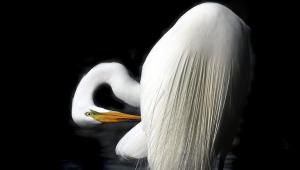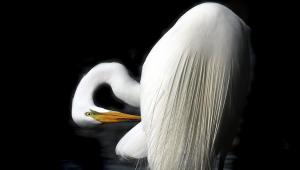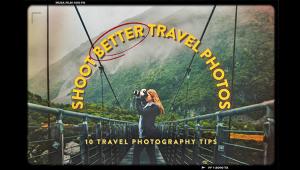The Business Of Children’s Portraits Page 2
JH: I was selected by the Hollywood Foreign Press to include a portrait session in the presenter gift box for the Golden Globes in 2004 and 2005. That was followed by documenting a private Golden Globes viewing dinner hosted by InStyle and Warner Brothers and creating images that were featured as part of the event's decor.
 |
SB: How does your work with the Golden Globes and your work
in Africa help to market your children's portraits? They seem so far apart
yet you make these two worlds work together.
JH: My work with the Golden Globes and InStyle magazine gives
me an edge over my competition. It also helps me increase my prices. As a perceived
value, I have become the photographer who photographs the families of celebrities.
The venture in Africa adds to that perceived value. It also gives me an additional
product to sell while trying to do something good for others. Giving back is
very important to me.
SB: What is it about your approach and your style of doing
children's portraits that has made you so successful?
JH: I'm told I have the patience of a saint. I'm
very low key when I work with children. I'm always trying to calm them
down or just watch what they're doing. Once we get to a location, and
the appropriate props are placed, everything becomes what a child will do naturally.
My style is very true to the children's nature. I try to make it as real
as possible. The comments I get from the parents are that the images look just
like them, not staged or stiff. When the mom gets teary-eyed, I know I've
done a good job.
SB: How much preproduction do you need to get to know the children
before the portrait is ready to shoot? Do you prefer studio or location shoots?
JH: Sometimes I do not meet the kids until the day of the shoot--my
rapport with them is instantaneous and I am blessed this way. Seventy percent
of my work is on location when I am working with children so they can be free
and running around and be really who they are. I like setting them into an environment
where I have the light and the setting but they direct themselves in order for
it to be real and to capture the moment. I let it happen naturally. Props work
great. I will set up a bench, chair, or even a basket and just let them go.
Sometimes I will even hide items such as a flower for them to find--it
should be fun! This is what really works for me. For the infants, we usually
work in the studio and the baby is held by a parent.
SB: What type of children's portrait client are you most
attracted to now at this stage of your business and what are your thoughts about
adding commercial portrait work to your business?
JH: Right now I'm working on a portfolio with the hopes
of getting some commercial work. The market for photographing babies is wide-open
and there are very few photographers who do it well. I have quite a collection
of images that I've been working on for the last three years. It is very
different from what I used to do. I love the challenge of continually changing
the look of my work. As with all my projects, it's just one more thing
that I do. I love what I'm doing. I love photographing people of all ages,
but especially children. My business plan includes the growth of my core business,
photographing families and children, but now I'm going worldwide. My new
marketing plan includes photographing all over the world.
SB: You made a bold move when you contributed your portrait
package for a celebrity gift basket program. Besides coming up with something
as different and creative as that, what recommendations would you make to a
photographer looking to make a career move into children's portrait photography?
JH: I would suggest joining photography trade associations.
They are the best for those just getting started. It's a great way to
meet people and exchange ideas. You must have passion for the field. Without
it, it's impossible to be good at it and if you're not good at it,
you won't be able to make money at it. If it is children you want to photograph,
you must love working with them. The best part of my day is when a child I've
been working with comes up and gives me a hug. There just isn't anything
better than that.
- Log in or register to post comments

















































